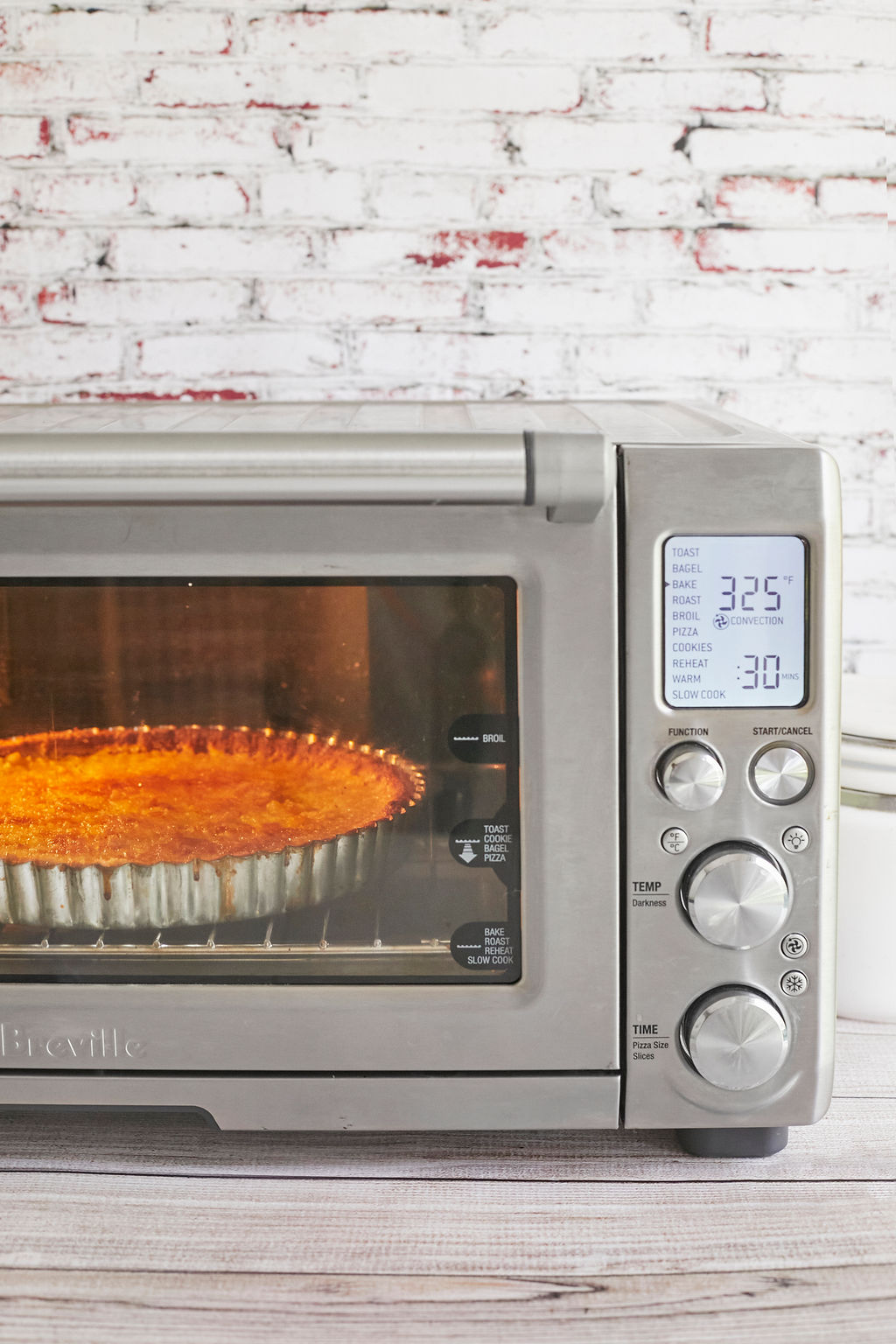I get questions from all over the world about baking in OTG Ovens. I personally have an OTG oven — also known as a Toaster Oven — and love it. It is fantastic for baking and I find although it is smaller than my traditional oven it is very powerful and does a great job at browning my cakes and crisping my bread.
Here is some basic info you might like to know about your OTG Oven…
What is an OTG Oven?
OTG stands for Oven-Toaster-Grill. It is essentially a smaller version of a traditional oven. It uses heated coils to cook food and requires much less setting up with just a plug socket needed to operate it and space on your countertop.
It’s also known as a Toaster Oven.
Possible Settings On Your OTG or Toaster Oven
An OTG oven is an electric oven and comes in conventional mode or convection mode with conventional functions. An OTG can reheat, keep warm, grill/broil, and bake food items.
This type of oven comes in different sizes, which will dictate what can be cooked in it. The average capacity of a single, full-size oven is 64 liters, the average capacity for a double oven is 62 liters for the main oven and 35 liters for the smaller one. OTG comes in varying capacities, 10/20/35/45/60 liters. Some OTGs come with rotisseries. This function is ideal for cooking and roasting meat. It can either be motorized or manual.
What’s Inside Your Toaster Oven
Your toaster oven has heating elements both on the ceiling and on the floor of the oven. In some models, you can choose to engage either or both elements to heat your oven.
For grilling, you need to heat the top element and for normal baking, you need both elements to be heated. While in some models upper and lower heating elements can NOT be controlled separately, that just means it requires additional attention: you do need to lower the temperature by roughly 15F-25F which depends on what you’re baking.
Or you need to monitor it closely during your few first tries, for example, by covering the top quickly with foil after 10 minutes or so.

Is Preheating Different Than A Regular Oven?
Where an OTG can take up to 15 to 20 minutes to preheat, the convection oven only takes around five minutes. This is not as efficient as a larger oven however you are saving on power in the long run.
The Difference Between A Microwave and an OTG (Toaster Oven)?
An OTG can be used for cooking food from raw to crispy, juicy, and fully cooked through. It cooks food with heated coils. When cooking with an OTG, heat is radiated by the coils and absorbed by the food. There is a fan present to distribute the heat, but most of the heat is dispensed directly below the coils. Convection utilizes a microwave with a fan for heating purposes.
A microwave, on the other hand, utilizes microwaves alone for heating the food, so it takes a longer time for the food to be cooked. An OTG oven’s feature is a fan that constantly circulates hot air around the food, so it cooks faster and browns evenly than a microwave at a lower temperature.
When you think about cooking raw meat for example you are best to use an OTG oven whereas a microwave would be good for the reheating of already cooked meat.
Perks To Having An OTG or Toaster Oven
- Does not need to be hooked up like a traditional oven. You just need counter space and a plug socket.
- Little counter space is needed as they are usually no more than 60 liters capacity at the most.
- Very affordable compared to a traditional oven. You pay a fraction of the price of a standard oven but don’t have to compromise on power.
- Although small, OTG ovens are mighty strong. They bake, roast, and broil just like a traditional, larger oven.
- You can choose the size and capacity to suit your needs. For example, if you have a large family, maybe a 60-liter capacity is for you. But, if you are single and living in a dorm then a 10-20 lire oven might be perfect to suit your needs.
Every OTG & Toaster Oven Is Different, So Get To Know Yours
The larger the OTG the more flexible it will be to use and the more likely it is that it will have all the multi-function ability of a regular oven. See this model (https://amzn.to/2wjr9YM) which is from Cuisinart as an example. Choose a model for which you have space and which will suit your family size and need.
GENERAL GUIDELINES for an OTG Oven
- Baking: The baking function can be used as you would normally use a large kitchen oven for roasting meats including chicken, or baking cakes, cookies, and more. This is dependent on the capacity of the oven.
- Broiling/grilling: The broiling function can be used for beef, chicken, pork, fish, and more. It also can be used to top brown casseroles and gratins.
- Toasting: Position the rack in the correct location in the oven according to your instruction book Centre your food items in the middle of the rack for toasting.
* Having bought an OTG, do read the instruction book carefully to ensure you get full advantage from your oven. Many of the manufacturers also have online tutorials for their specific models.
Do you want to learn more about the different types of ovens? Check out my ‘Guide to Knowing your Oven‘.
Try These Toaster Oven-Friendly Recipes!
Small-Batch Cupcakes Made In A Toaster Oven
And don’t forget to buy my Bigger Bolder Baking Cookbook!
The post Understanding Your Toaster Oven (A Guide To OTG Baking) appeared first on Gemma’s Bigger Bolder Baking.
from Gemma’s Bigger Bolder Baking https://ift.tt/33w8Ex8
via IFTTT





No comments:
Post a Comment